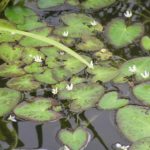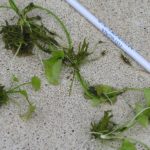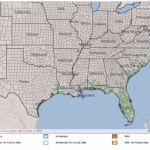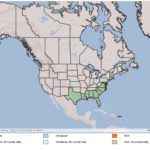Nymphoides aquatica
USDA, NRCS. 2018. The PLANTS Database (http://plants.usda.gov, 28 March 2018). National Plant Data Team, Greensboro, NC 27401-4901 USA.
Illustration courtesy of University of Florida/IFAS Center for Aquatic and Invasive Plants. Used with permission.
What is Banana Lily?
Physical Characteristics
Leaves:
- Floating
- Alternate
- Mostly base leaves
- Heavy
- Smooth
- Yellowish-green on upper surface
- Dark on lower surface
- Slender leaf stalks
Flowers:
- Sepals up to 0.59 inches long & wide
- Petals elliptical- or sword- shaped
- Petals 0.39+ inches long
Stem:
- Rises from roots
- Up to 9.84+ inches in length
- Pedicels up to 3.16 inches long
Seeds:
- Rough coat
Roots:
- Fleshy & clustered
Where Does it Grow?
Banana lily can be found in ponds or sluggish streams.
Pros and Cons of Banana Lily
Banana lily has no known direct food value to wildlife. Submerged portions of all aquatic plants provide habitats for many micro and macro invertebrates. These invertebrates in turn are used as food by fish and other wildlife species (e.g. amphibians, reptiles, ducks, etc.). After aquatic plants die, their decomposition by bacteria and fungi provides food (called “detritus”) for many aquatic invertebrates.





